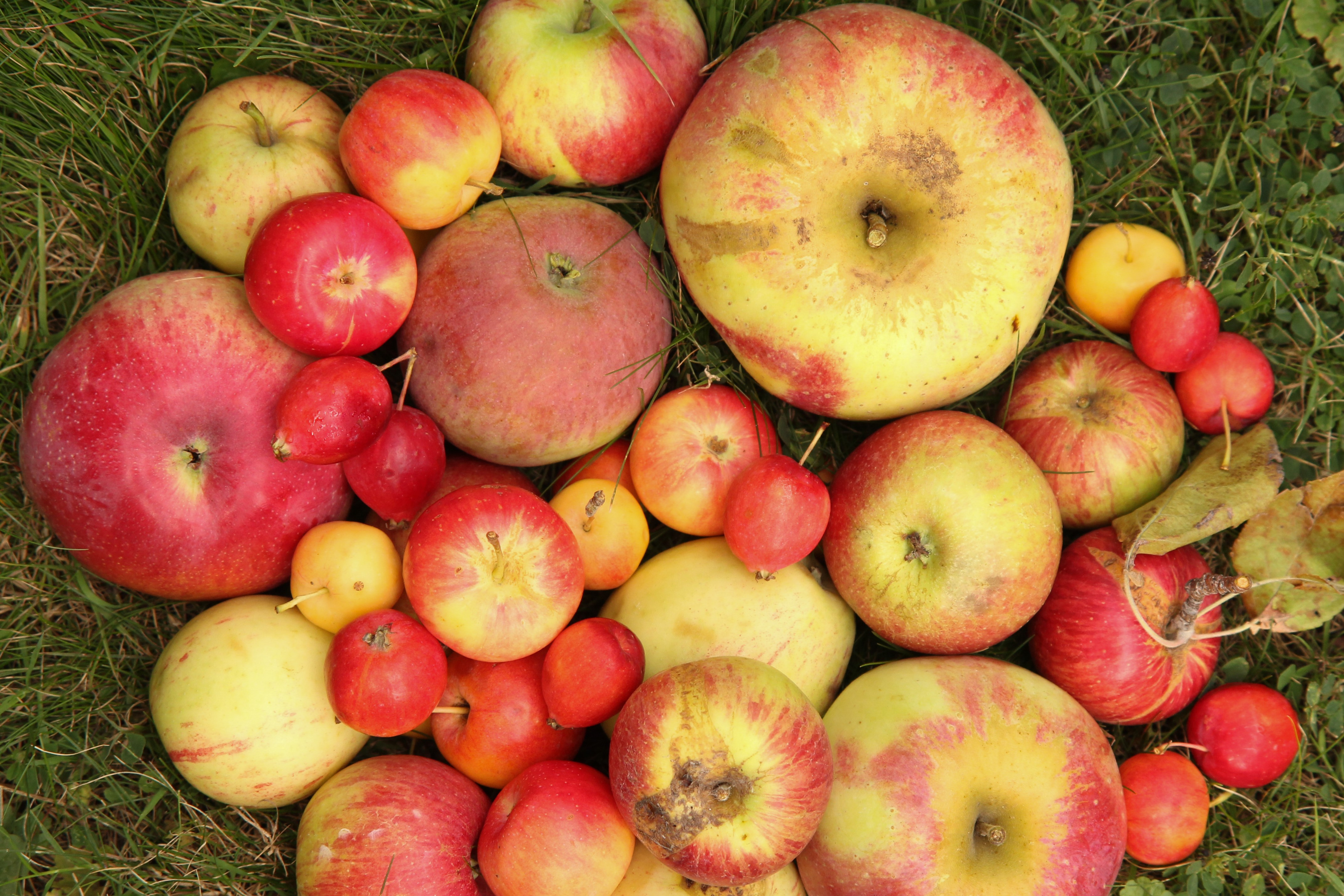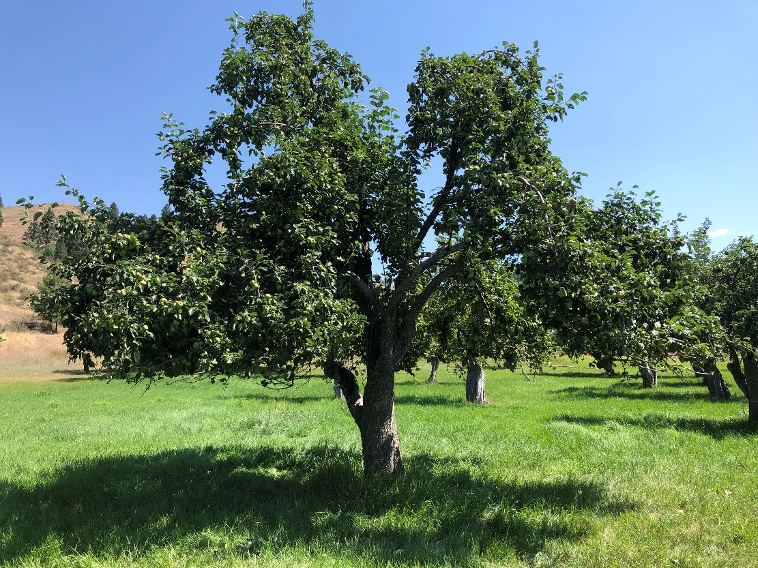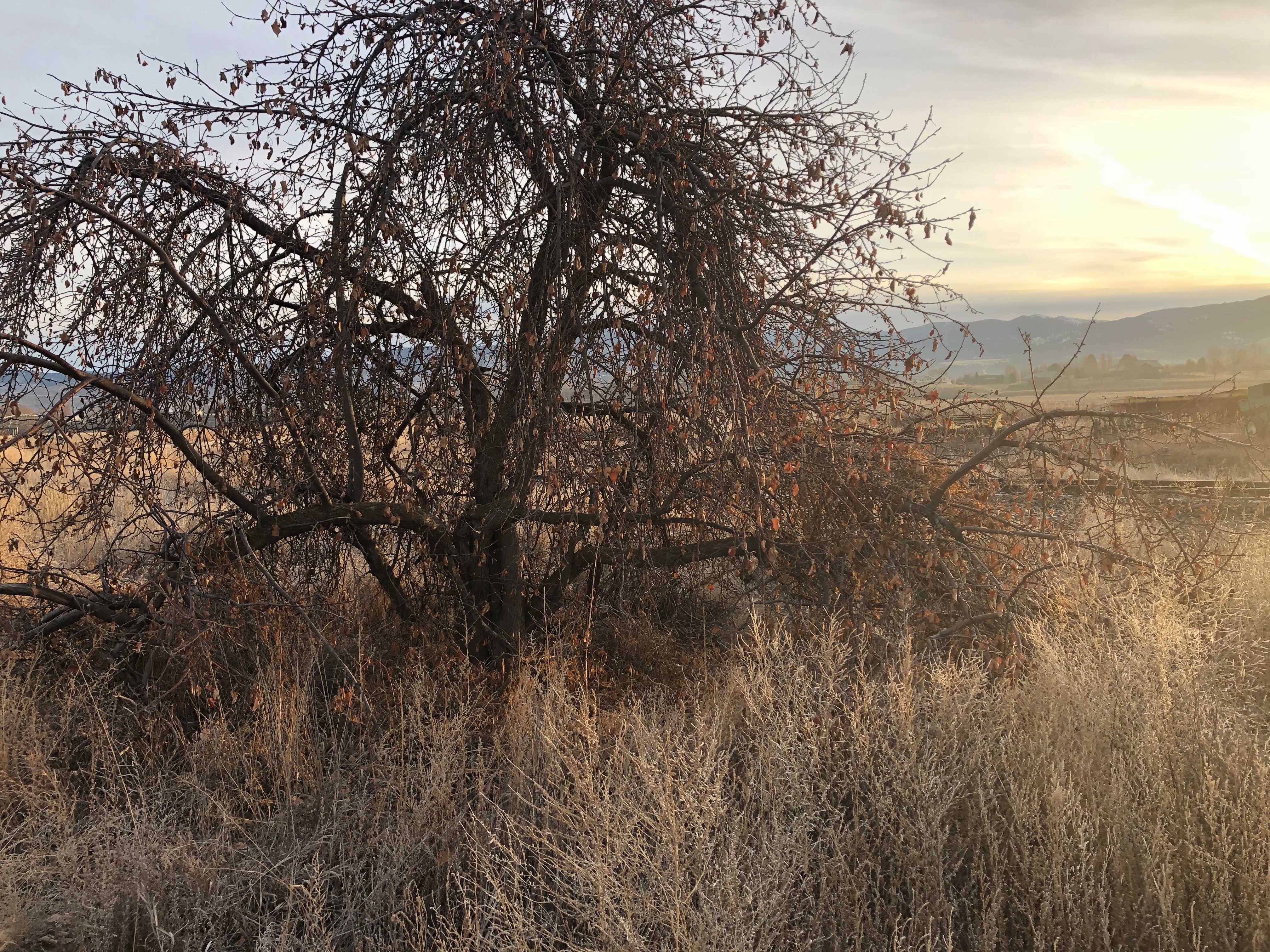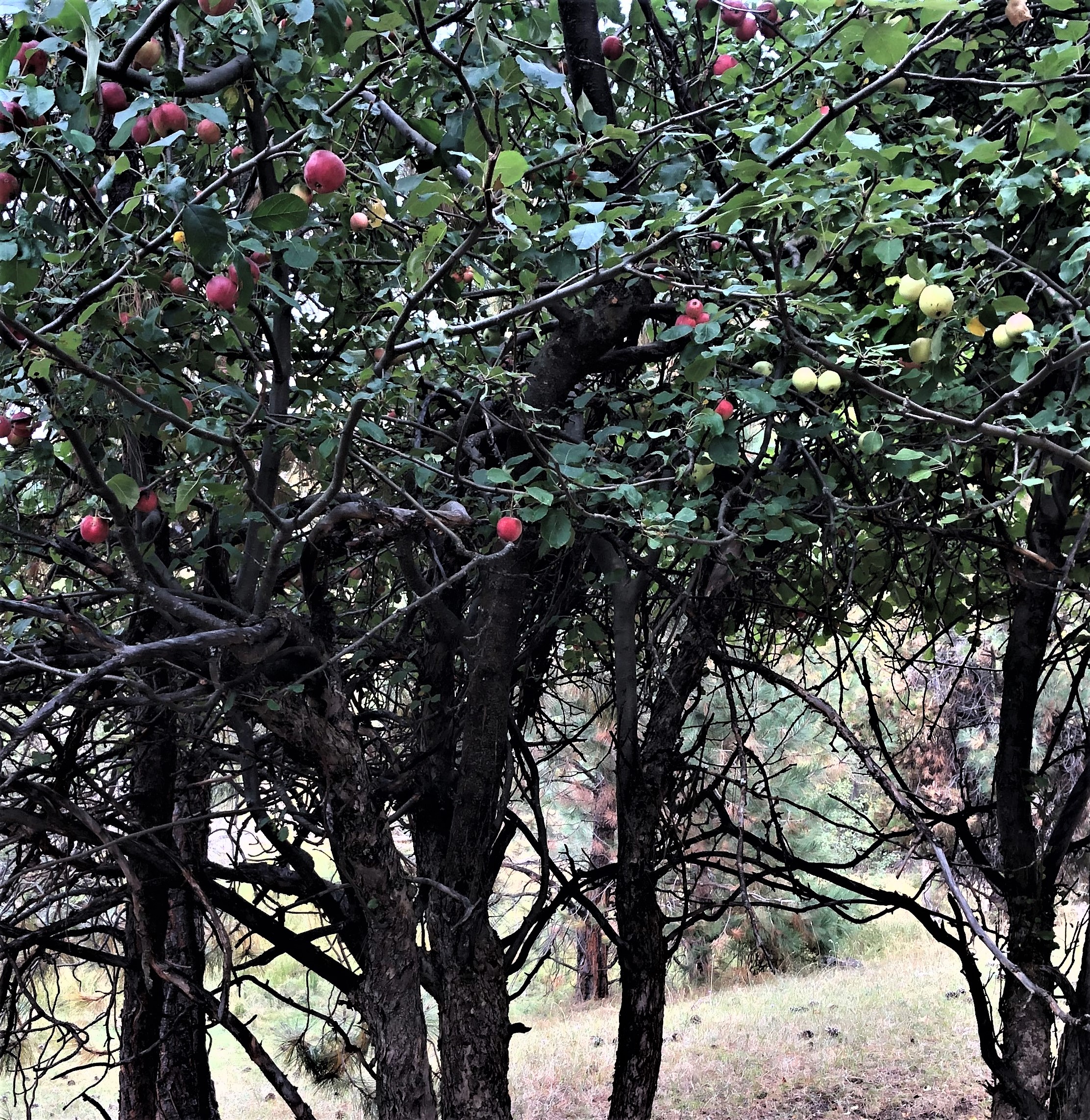Pomona of Montana Heritage Apples

By Katrina Mendrey
Introduction
Often the information we are most interested in about our old apple tree is, what kind of apple is it? We want to provide the fruit with a name to complete the story and more fully understand the tree’s history. This information may give insight into when the tree was planted, what it was used for, or if it’s a lost variety that should be preserved.
The purpose of this guide is to provide users with a starting point for identifying their cultivar. Using simple fruit characteristics, DNA sampling and historical documentation, this guide will help the user narrow their search to more fully understand their fruit and its place in Montana’s history of fruit production.
About the Apples
The apples included in the key have been selected based on genetic testing to identify the most commonly planted trees still surviving in heritage orchards. The top six identified through DNA analysis are listed in Figure 1 and are the primary apples included in this key. Additional apples in the key were selected based on the same DNA sampling, identification using physical samples from heritage orchards, or frequent mention in historic documents about early apple plantings in Montana.
Figure 1. Occurance of cultivars and unidentified apples in Montana heritage orchards as determined by DNA analysis. Analysis performed by Norm Weedam, MSU and Gayle Volk USDA-ARS. Data summarized by Rachel Leisso; graphic by Katrina Mendrey.
How to use this key
Below are simple steps that will help you successfully identify your apple. Before you start to use the criteria (Step 3) in this key to identify your apple, use Steps 1 and 2 to consider if the tree is a possible match for apples in this guide.
Step 1. Determine if your tree is a seedling or cultivar.
Apples are not true-to-seed, meaning, when you plant an apple from seed, the result will be a different cultivar. It might resemble the parent fruit, but it will not be an exact replicate, much like a child is not a clone of one parent. Apples planted from seed, or "seedlings" are genetically unique. A cultivar, on the other hand, started from seed but was grafted for its high-quality fruit to produce genetically identical, or cloned, trees. Cultivars are named varieties we can identify, seedlings are not.
Cultivars typically have a single trunk with some shape or form still recognizable (though not always). They are located near old buildings, in pastures or beside homes. When planted in groups they are often in rows or are evenly spaced, and sometimes the graft union is still visible with a slight bulging on the trunk.
With a few exceptions, most Montana heritage orchards were planted with grafted cultivars, particularly those post-1860. Sometimes the graft union on these trees has become buried, and the trees' rootstock variety is now dominant. Or, grafted cultivars died while the rootstock continued to grow. Common rootstock used during this time period included 'Antonovka' and 'Siberian crab'.
Occasionally, homesteaders planted trees from seeds, but more often, seedling trees have self-seeded. Seedling trees may be unassociated with a residence and tend to be located along roadsides, streams, railroads, or in ravines. They often have multiple trunks and an unruly form. These trees are not a known cultivar, so will not be identifiable by physical attributes or genetic testing. If this describes your tree, it is yours to name, cherish and propagate. If you believe the tree is a cultivar, or are unsure of its origin, move on to Step 2.



Cultivar: 'Duchess of Oldenburg' tree in heritage orchard. Trees are evenly spaced and pruned to an open vase form popular in the 1880's to 1940s.
Possible seedling tree growing along railroad in an open field. Multiple leaders (or trunks) and unruly form give additional clues this likely is not a cultivar.
Seedling trees on steep hillside, several small trunks with multiple varieties of apples planted close together indicate one or more, if not all, of these trees are seedlings.
Step 2. Consider when the tree was planted.
This will help you narrow the possibilities for what cultivar it might be. For example if it was planted around 1900, it’s not a 'Honeycrisp' but could be a 'Duchess', 'Wealthy' or other cultivar included in the Montana Heritage Apple Identification Key. All the apples in this guide were introduced before 1930. If your tree was planted later, it could still be a heritage cultivar, but it could also be one of more than 100 cultivars planted in Montana. For more details on dating your tree, visit Discovering the History of Your Orchard. If you can’t date your tree, don’t fret, you can still move on to Step 3.
Step 3. Use physical identifiers including color, shape and size to search the apples most commonly found in Montana heritage orchards.
Key characteristics of apple identification (i.e., shape, size, flavor, and color) are highly variable, depending on growing conditions (i.e., climate, water and nutrient status). Procuring good fruit samples is necessary for effectively using any apple identification key. Select several representative ripe apples from locations on the tree that are not shaded (which may result in poor coloring and undeveloped fruit). Additionally, many apples share these key characteristics such as “round with carmine stripes". The goal of searching the identification key is to get a general idea of what the cultivar might be. If you didn’t find a perfect match, proceed to Step 4.
Step 4: Submit a sample for genetic identification.
The only sure way to identify your apple is to submit a sample for genetic testing. This involves collecting a leaf sample and sending it to a lab that might be able to match your sample to one of the known cultivars it has on file. We submit samples that are possibly lost cultivars or have potential for commercial propagation through the Heritage Orchard Program. Contact Zach Miller directly to learn more about this process at zachariah.miller@montana.edu.
You can also submit a fruit sample to us for identification using our Montana Heritage Orchard Fruit Sample Form. We will do our best to identify the apple, and if it is determined to be an unknown or a lost cultivar of interest to our program, we will submit it for genetic testing. If you would like to submit a sample on your own, it costs about $150, and we can help you arrange for testing.

